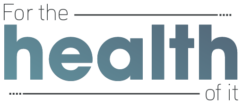For the last 11 years the US News and World Report has ranked the best diets. This year they looked at 39 diets looking at a range of facts from their heart healthiness to their likelihood of helping you with your weight lose.
The diets are ranked by a panel of nationally recognized experts in diet, nutrition, obesity, food psychology, diabetes and heart disease. They’re rated in seven categories: how easy it is to follow, its ability to produce short-term and long-term weight loss, its nutritional completeness, its safety and the potential for preventing and managing diabetes and heart disease. They also determined whether the diets claims add up or fall short, scrutinized for possible health risks and revealed what it’s like to live on the diet.
#1 MEDITERRANEAN DIET
Cons: Lots of grunt work and moderately pricey
In terms of a balanced diet it falls within accepted ranges for the amount of protein, carbs, fat and other nutrients it provides.
#2 DASH DIET
Cons: Lots of grunt work and somewhat pricey
DASH stands for dietary approaches to stop hypertension due to this the diet is promoted by the National Heart, Lung and Blood Institute. It emphasizes eating fruits, veggies, whole grains, lean protein and low-fat dairy. These foods are high in potassium, calcium, protein and fiber all to be shown to assist with lowering blood pressure.
The DASH diet discourages foods that are high in saturated fat, such as fatty meats, full-fat dairy foods, tropical oils, sugar-sweetened beverages and sweets. By following the DASH diet sodium is decreased to 2,300 milligrams a day and is eventually lowered to 1,500 milligrams per day.
The nutritionists ranked the DASH diet highly as it is balanced and is easily followed long term.
In terms of a balanced diet it falls within accepted ranges for the amount of protein, carbs, fat and other nutrients it provides.
#3 FLEXITARIAN DIET
Cons: Emphasis on home cooking and maybe tough if you don’t like fruits and vegetables pricey
The Flextarian Diet tied with the DASH diet. The Flextarian Diet is a combination of a flexible and vegetarian diet coined in 2009 by registered dietician Dawn Jackson Blatner. Blatner claimed that you can still reap the benefits of a vegetarian diet without eliminating meat. You eat a vegetarian diet most of the time but may have a steak or burger when you have the urge hits.
In terms of a balanced diet it falls within accepted ranges for the amount of protein, carbs, fat and other nutrients they provide.
#4 WEIGHT WATCHERS
Cons: Participation can be pricey depending on the program you choose.
WW is focused on inspiring healthy living and improving overall well-being. That includes taking a holistic approach to help members eat healthier and move more. The program assigns every food and beverage a point value, based on its nutrition. The backbone of the plan is support via the WW app and expert-led workshops to provide practical tools and behavior-change techniques for help along the way.
In terms of a balanced diet it falls within accepted ranges for the amount of protein, carbs, fat and other nutrients they provide.
#5 MAYO CLINIC DIET
Cons: Lots of grunt work and somewhat pricey
Weight loss and a healthier lifestyle go hand in hand on the Mayo Clinic Diet. You recalibrate your eating habits, breaking bad ones and replacing them with good ones with the help of the Mayo Clinic\’s unique food pyramid. The pyramid emphasizes fruits, veggies and whole grains. In general, these foods have low energy density, meaning you can eat more but take in fewer calories. By sticking with the Mayo Clinic Diet, you’re expected to shed 6 to 10 pounds in two weeks and continue losing 1 to 2 pounds weekly until you’ve hit your goal weight.
In terms of balanced diet it falls within accepted ranges for the amount of protein, carbs, fat and other nutrients they provide.
#6 MIND DIET
Cons: Details are not fleshed out and recipes lack resources.
MIND stands for Mediterranean-DASH Intervention for Neurodegenerative Delay. diet takes two proven diets – DASH and Mediterranean – and zeroes in on the foods in each that specifically affect brain health, which may lower your risk of mental decline, according to initial research. In 2015 a study funded by the National Institute on Aging, found the MIND diet lowered Alzheimer\’s risk by about 35% for people who followed it moderately well and up to 53% for those who adhered to it rigorously. In April 2020 study from Iran, which concluded that the MIND diet may reverse the harmful effects of obesity and cognitive ability and brain structure. Though there’s no surefire way to prevent Alzheimer’s disease, eating healthful mainstays such as leafy greens, nuts and berries may lower a person’s risk of developing the progressive brain disorder.
The benefits of the diet: Provides fewer carbs than is recommended by government guidelines which is known to bring on quick weight loss.
#7 TLC DIET
Cons: Not much education available, you have to decode nutrition labels
The TLC (Therapeutic Lifestyle Changes) diet was created by the National Institute of Health’s National Cholesterol Education Program with the goal of cutting cholesterol as part of a heart-healthy eating regimen. It calls for eating plenty of veggies, fruits, breads, cereals and pasta and lean meats. The guidelines are broad enough that you have a lot of latitude with what you eat.
The benefits of the diet: Contains significantly less fat than the government’s recommended limit which is known to be a heart-healthy approaches.
#8 VOLUMETRICS DIET
Cons: Lengthy meal preparation and if you don’t like fruits, veggies and soup, forget it
Pioneered by a Penn State University nutrition professor Volumetrics is more of an approach to eating than it is a structured diet. It assigns energy density to foods. Knowing the energy density allows you to cut the energy density of your meals to make choices that fight hunger. Food is divided into four groups. Category one (very low-density) includes nonstarchy fruits and vegetables, nonfat milk and broth-based soup. Category two (low- density) includes starchy fruits and veggies, grains, breakfast cereal, low-fat meat, legumes and low-fat mixed dishes like chili and spaghetti. Category three (medium-density) includes meat, cheese, pizza, french fries, salad dressing, bread, pretzels, ice cream and cake. And category four (high-density) includes crackers, chips, chocolate candies, cookies, nuts, butter and oil. You\’ll go heavy on categories one and two, watch your portion sizes with category three, and keep category four choices to a minimum. Each day, you\’ll eat breakfast, lunch, dinner, a couple snacks and dessert.
In terms of a balanced diet it falls within accepted ranges for the amount of protein, carbs, fat and other nutrients they provide.
#9 NORDIC DIET
Cons: Time-consuming, impractical
The Nordic diet was specifically designed to revolutionize Nordic cuisine and improve public health. Nutritional scientists based at Denmark’s University of Copenhagen teamed up with a co-founder of the world-renowned restaurant Noma for this multiyear project. The diet incorporates aspects of Scandinavian tradition and culture. The Nordic diet calls for a lifestyle that embraces a return to relaxed meals with friends and family, centered on seasonal, locally sourced foods, combined with concern for protecting the environment. The Nordic diet focuses on eating wholesome foods that are local to you.
10 concepts underlie the Nordic diet: Eat more fruits and vegetables every day. Eat more whole grains. Include more foods from the seas and lakes. Choose high-quality meat – but eat less meat overall. Seek out more food from wild landscapes. Use organic produce whenever possible. Avoid food additives. Base more meals on seasonal produce. Consume more home-cooked food. Produce less waste.
In terms of balanced diet it falls within accepted ranges for the amount of protein, carbs, fat and other nutrients it provides.
#10 ORNISH DIET
Cons: Staying the course could be tough if you\’re aiming to reverse heart disease
The Ornish Diet was created in 1977 by Dr. Dean Ornish, clinical professor of medicine at the UCSF – to help people “feel better, live longer, lose weight and gain health.” The diet is low in fat, refined carbohydrates and animal protein. It is based on eating whole foods and a plant based that is predominantly of fruits, vegetables, whole grains and legumes, minimally processed and low in fat, sugar and refined carbohydrates. It’s not just a diet: It also emphasizes exercise, stress management and relationships.
The diet is a low-fat diet which contain significantly less fat than the government’s recommended limit and are known to be heart-healthy approaches.
But How Did Some Of The More Popular Diets Fare?
#12
Pros: Guess work, prepackaged meals
Cons: Home-cooked, restaurant meals largely off-limits. Budget-buster
Pros: Coaching & support group, flexible food choices
Cons: Lacks in-depth nutritional guidance. you’re glued to your phone
#13
#20
Pros: You shape your diet, you won’t be hungry
Cons: No guidance on foods other than carbs, got to do homework
Pros: Heat & eat, no off-limits (not even carbs)
Cons: Comeback of the TV dinner, eating out is limited
#21
#22
Pros: Yes to mindful snacking, No calorie counting
Cons: Could seem awfully restrictive at first, lots of time prepping and cooking meals
Pros: All foods welcome, frequent meals and snacks
Cons: Tedious portioning, limited daily calories
#23
#26
Pros: Convenient – grab & go, no math or guesswork
Cons: The shakes and meal bars could be a turnoff, potential for monotony
Pros: Carnivore approved, very low in sodium
Cons: Goodbye to grains and dairy, pricey
#31
#33
Pros: Fatty food are guilt-free, quick weight loss
Cons: Strict limits on breads and other carbs, low-carb dieters may eat too much fat
Pros: Fatty foods embraced, can cycle in and out of diet
Cons: Strict carb limits, can seem extreme
#37
I recommend going to the US News and World Report to review all these diets to get a more complete ranking. There is one thing to think about in regards to losing weight and eating more healthy and to continue to sustain these habits is to look at it as a lifestyle change. Remember diet is a four letter word!

